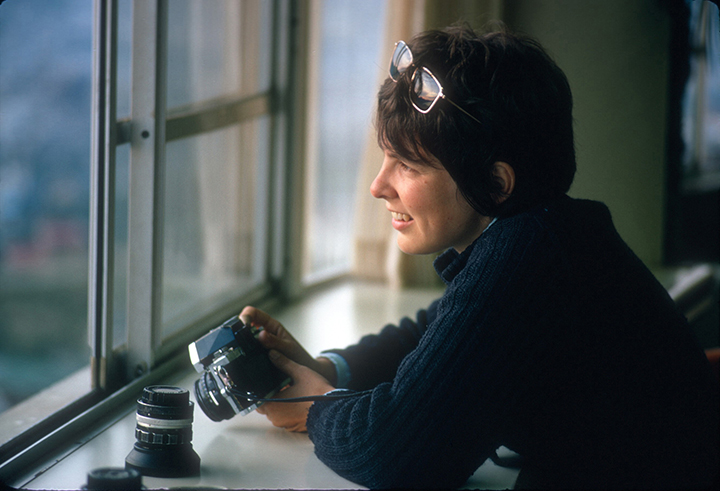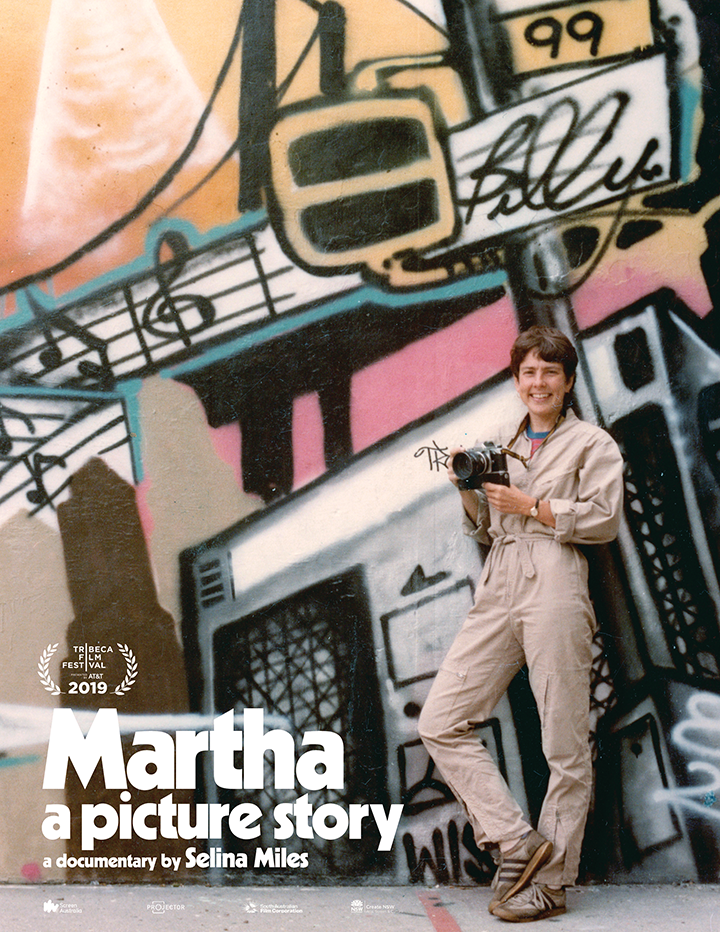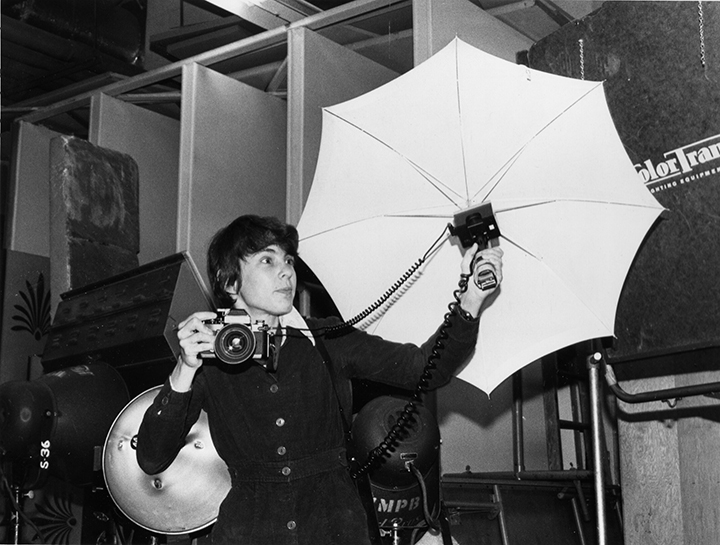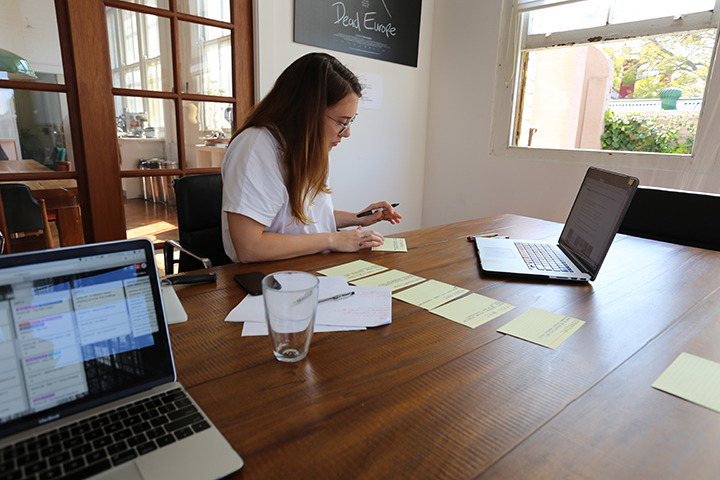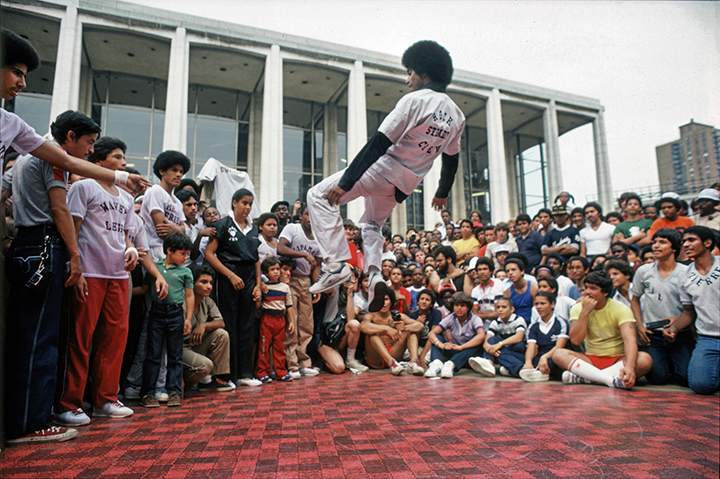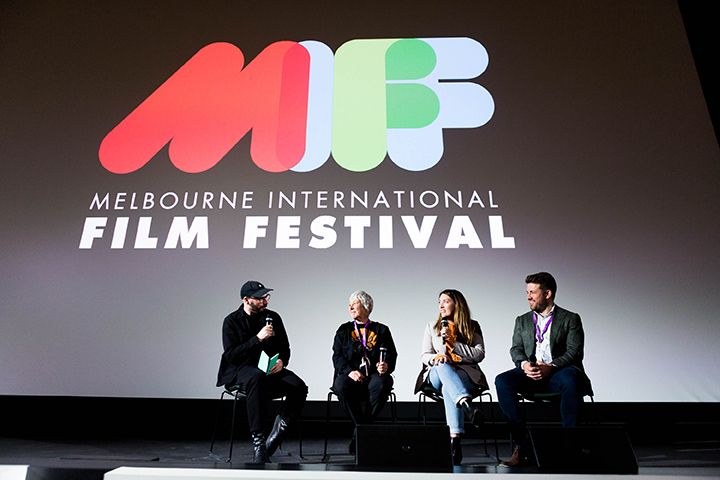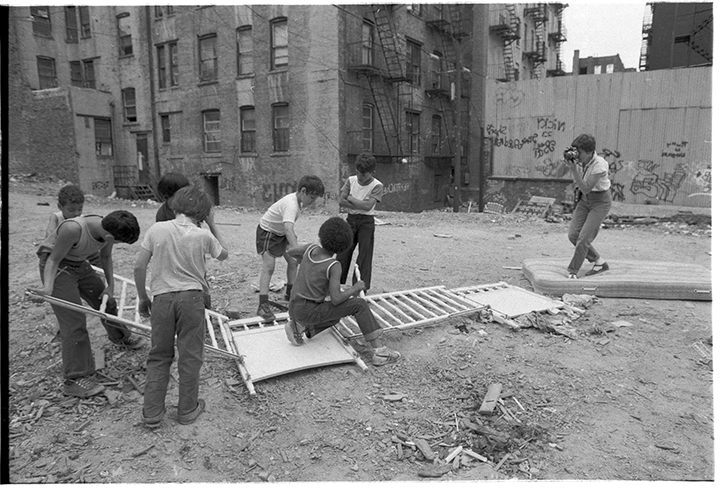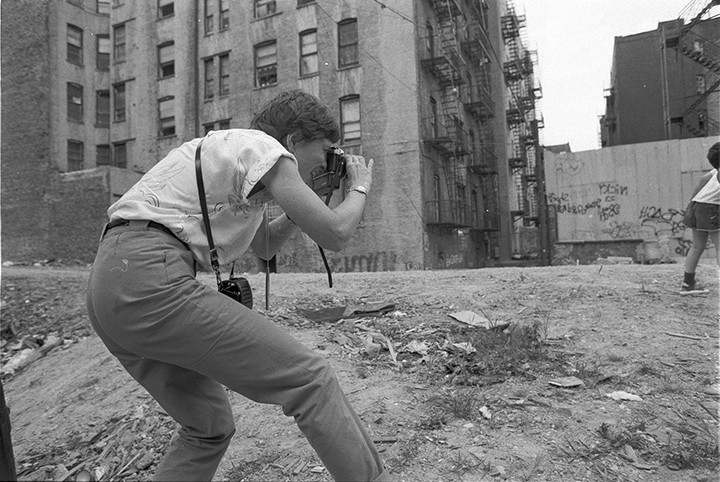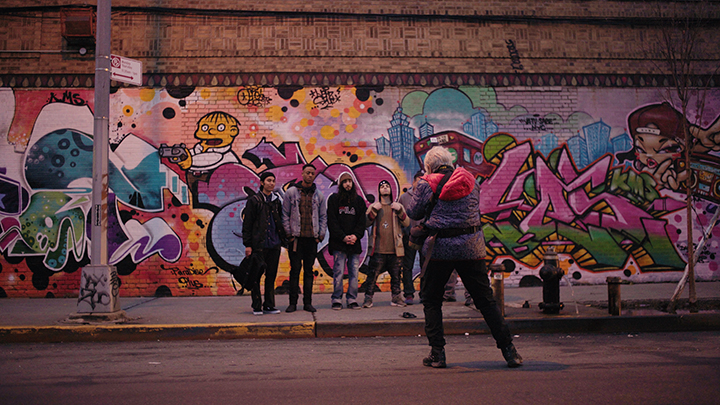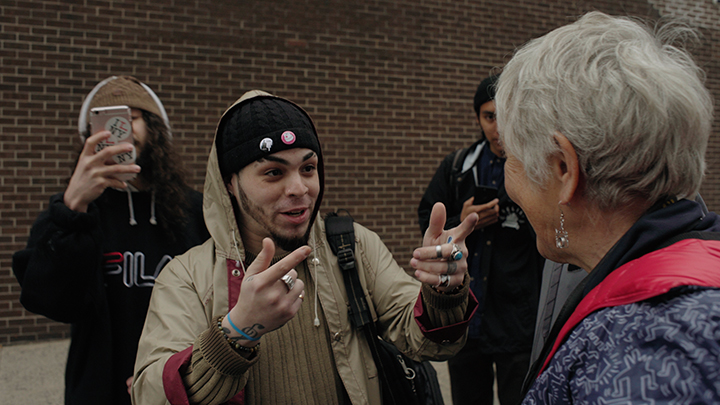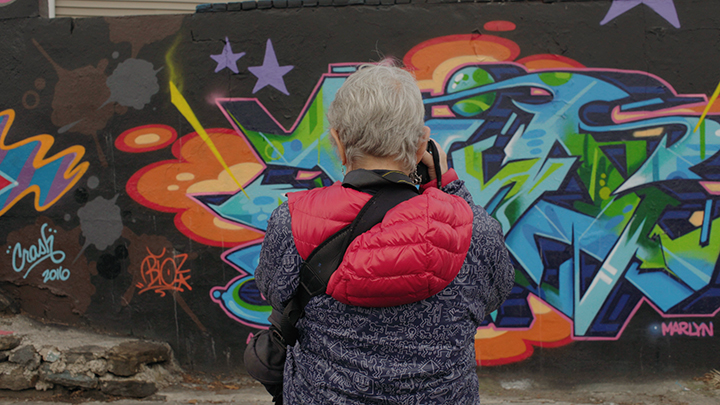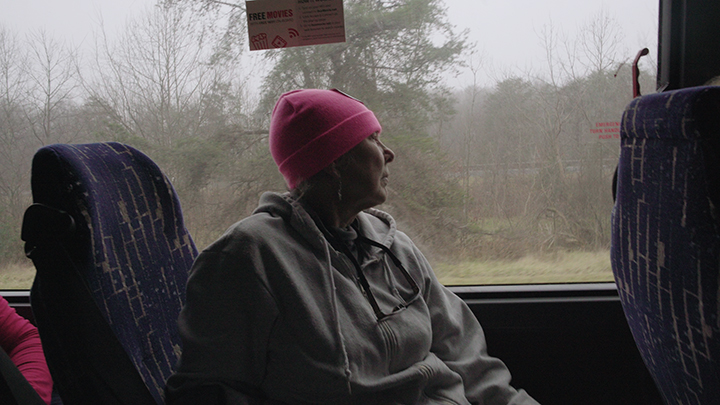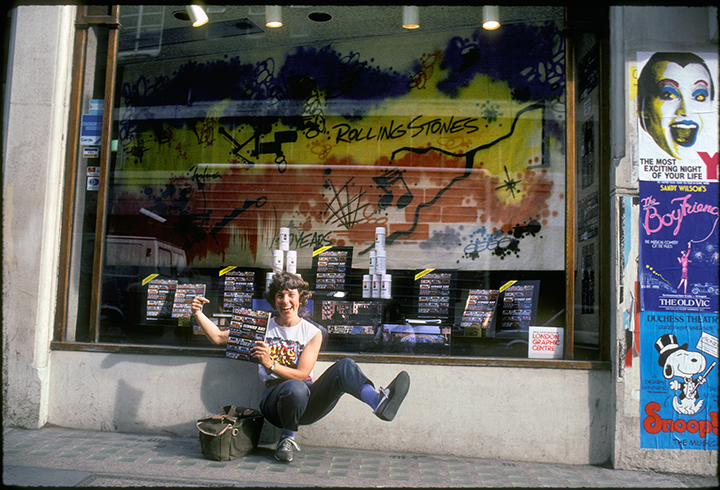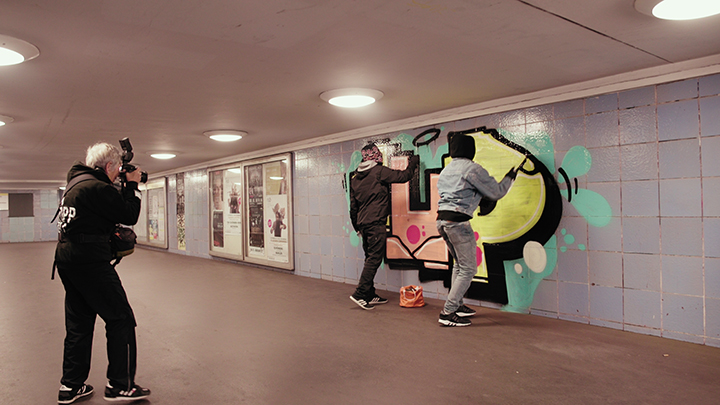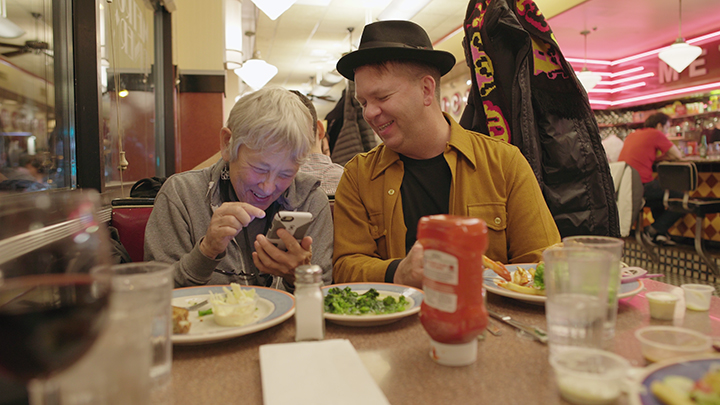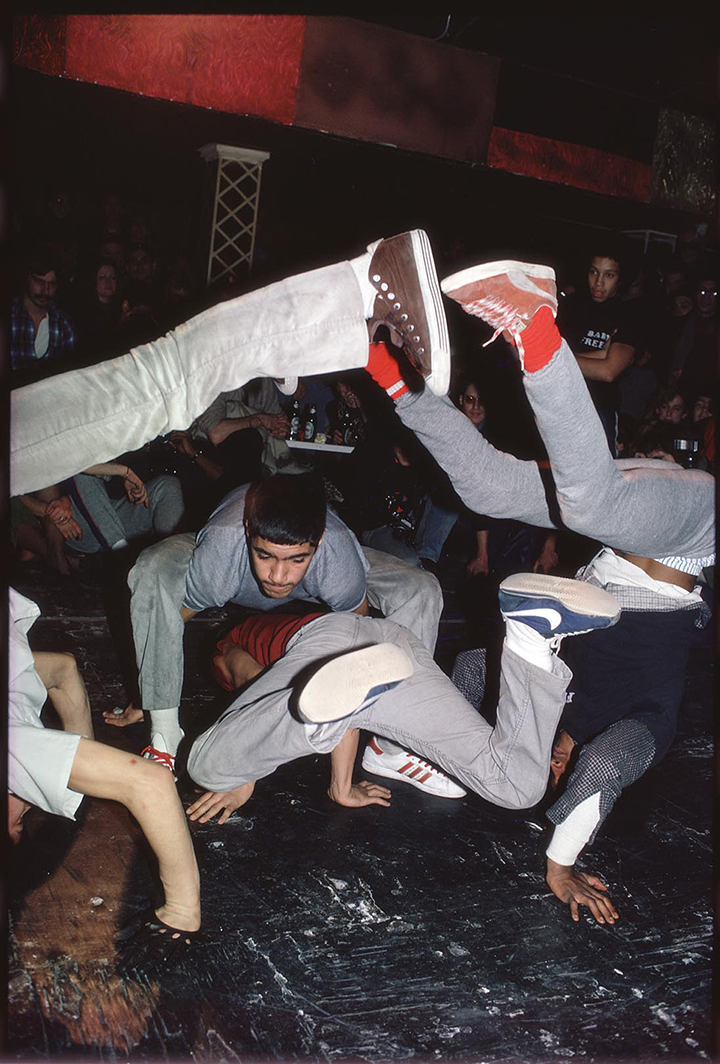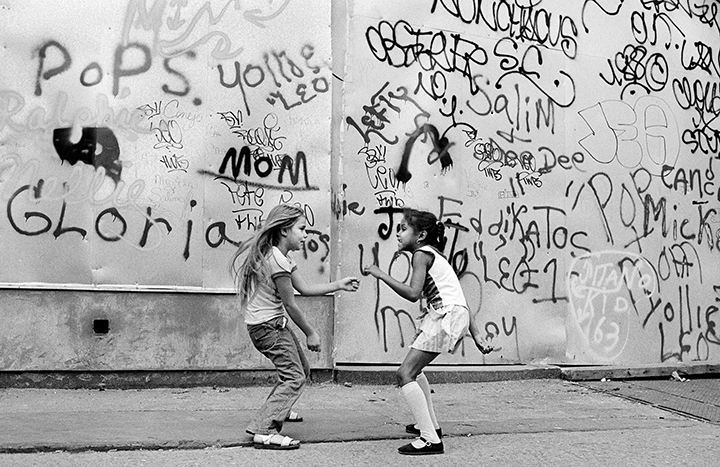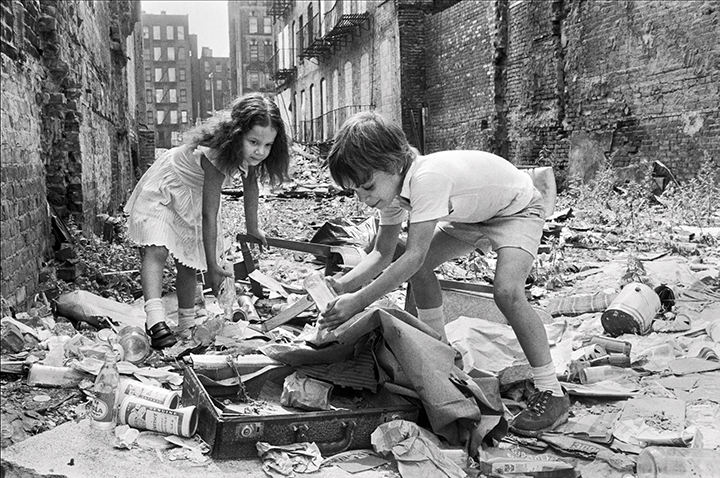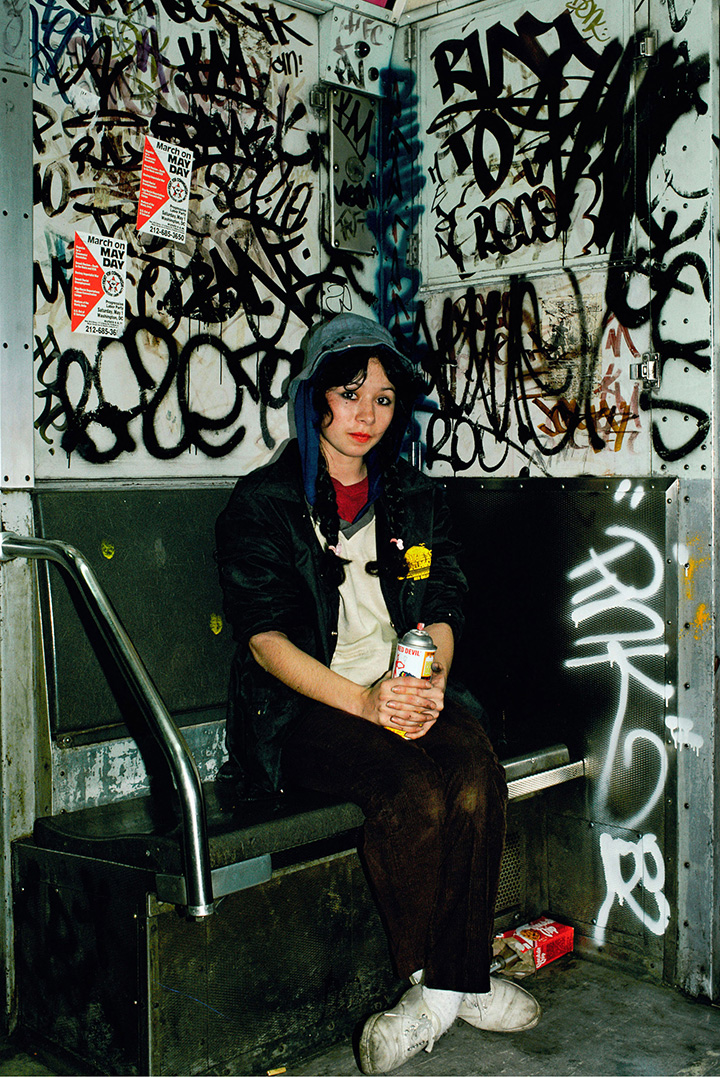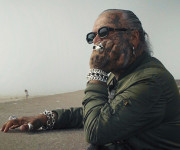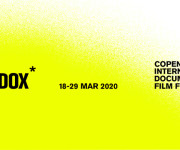Everyone with the slightest interest in street culture knows Martha Cooper, if not by name then at least by the iconic photos snapped by her in the ’70s and ’80s. The rise of New York’s graffiti scene was documented by Martha and later published in “Subway Art”, a book that over the years even obtained “the bible of graffiti” title. Today Martha is 77 and still rocking it, she hangs out with young street artists, captures them in a process, and keeps inspiring other creative souls. We are having a chat with one of them – Selina Miles, a film director from Sydney who feels an affinity with misfits, troublemakers, risk-takers, and those who question authority. Selina has spent some time with the legendary photojournalist and recently presented a feature documentary film “Martha: A Picture Story”.
Selina, it is not a secret that you did not go to a film school, what are the biggest challenges that self-educated filmmakers face when trying to make it to this industry?
I think there were both benefits and disadvantages to my path into the industry. Coming from a DIY, the self-taught background really helped me in the early days, when I was shooting and editing all my own projects. I found that I was able to adapt more easily than my peers who had gone to film school because I wasn’t expecting access to high-end crews or the best equipment. I was more able to think outside of the box – in part because of my naivety.
Later down the track, when I found myself directing larger teams, I really felt at a disadvantage because I didn’t have the language of film and wasn’t able to communicate my ideas as easily. Another important benefit of getting a formal education is the opportunity to form relationships and contacts. The film is an industry where you rely very heavily on your friends, contacts, and collaborators, and it took me longer to build up this network. I’m proud of my background and pathway but I don’t think there’s any right or wrong way to get started, and I would say you can never be too educated!
Are there any particular obstacles that women artists still encounter while starting a filmmaking career today?
The gender pay gap and the lack of diversity in decision-making positions in the film industry are very well documented issues and there are many great initiatives fighting to improve things for those underrepresented groups. I do think we can all be pretty optimistic that things are moving in the right direction but it’s an ongoing issue…
You started your journey with making music clips and short videos, how did you decide to jump into a long-format documentary genre and cover the urban theme?
It wasn’t so much of a decision as a natural progression, I didn’t set out to make a feature documentary with Martha. But after a few days of filming in York, I realized that there was an opportunity to tell a much larger story than I originally anticipated. I just kept filming without really knowing which format it would take, and after a few months and a few different excursions to New York, Miami and Berlin, I had a short trailer which I shared with some contacts. It was with the encouragement of some of my mentors and collaborators that I got the courage to take the leap into the very long and exhaustive process of developing a feature film.
So how did you two meet? Are there any other interests besides graffiti that both of you share?
We met at a street art festival in Tahiti, where we were both hired to document, me shooting video and her as a photographer. We are very different people but we share a love of travel and image-making and have a fairly similar sense of humour. I have learned so much about life from Martha! She’s a truly amazing woman, and there’s never a dull day spent with her.
I believe that making a documentary entails a strong level of trust, how did it go with Martha?
It was definitely hard at times, but Martha showed me an immense amount of patience and trust. Being a photographer, she was very aware of the camera and it was near impossible to catch her off guard. She’s also a very busy and active person and was very patient with the tedious process of being followed around by a camera crew.
Talking about the film itself. How hard was it to balance between various aspects that you wanted to feature in it? Were you aiming at finding the golden ratio between Martha’s personal story and her creative works?
It was very hard to decide which of Martha’s projects to feature in the film as there are so many – there are whole books that we didn’t have time to feature. I hope that the film can serve as a bit of an introduction to her photography and that people can go on to do their own research after watching it. I think that as well as her amazing catalogue of images, Martha’s story is a really important one and I wanted the audience to understand the tenacity and the perseverance that went into those images.
Documentaries are challenging as not everything depends on you as a storyteller. Did you often find yourself under time pressure or stress because of not getting that shot which you might have had in your vision?
I learned a few important lessons during the shooting of Martha about this. There were many times that I set out with a really specific vision of what I might capture and how a certain scene might play in the film, and there were other occasions where I went along really grudgingly to shoot when Martha asked me to, convinced that the material would be useless. Once you get into the edit, you realize that there is very little you can do to predict how valuable a certain shoot day will be in the end. There is a real art to letting go, and learning to stay open and optimistic and passionate and curious every day, and trust the process, and follow your instincts – but not too rigidly.
Does it mean that creatives should be ready to make compromises on their stories?
I think it’s very important to fight for your vision and be uncompromising in your devotion to your project. There will be people along the way who disagree with you and it’s essential to be able to push back and stand by your beliefs and ideas. But, there will always be a compromise, creatively, financially – and being able to reason with those limitations effectively is key to being a successful filmmaker.
So what was Martha’s impression of this film?
Showing Martha the film was really the most challenging moment of my life! I was so nervous. We rented a small theatre in New York and had a small group of people that featured in the film in attendance. We sat down to watch it and I thought I’d have a heart attack! Fortunately, Martha was really happy. We went out for a lovely dinner afterwards and listening to the group discussing certain scenes, ideas or opinions was thrilling.
You once mentioned love taking chances. Have you ever regretted any of them?
I think that as long as you’re happy with where you’re at in your life, you can’t resent any of the decisions that brought you to where you are today. Although there’s been plenty of occasions where I have struggled… I’m also very fortunate that I’ve had the means and the support to take risks in my life, and although they haven’t all worked out, I don’t regret anything that’s happened.
Where is the line between irresponsibility and recognition of opportunities then?
This is an interesting question. I do think that the move to feature documentary demands a change from a mindset of sharing your own thoughts, opinions, and interests, to become a mediator between different perspectives of truth. For me, short online content requires little thought of responsibility to a particular audience and is more a creative self-expression. When you make a film, you take on a great deal of responsibility: to your subject, to the audience, and to the story, not to mention financial responsibility, and responsibility to all the other creatives working to help you achieve your vision. You have to balance your own opinions and your desire to portray a subject in a particular way, with what will best engage an audience and serve the story you are telling. Nobody wants to watch a perfect character or a story without conflict for 85 minutes. You have to be prepared to challenge your own ideas of your subject and story for the benefit of the film.
How much of this impulsive side of yours can be found in your filmmaking style?
I think it can be found in the topics I document; I’ve always felt an affinity with misfits, troublemakers, risk-takers, and those who question authority. Although I’ve been very consistent in the themes and topics I’ve explored, I also don’t really like to repeat myself. Once I’ve completed a project that represented a particular challenge to me, I usually don’t want to explore that technique or format again.
Being a visionary yourself, do you start out your projects with an image or a story?
The story comes first. You can make the most trendy, beautiful, expensive film in the world – but if the story is lacking, it’s useless. Conversely, an audience will fall in love with something shot on an iPhone if the story speaks to them.
Graffiti plays a big role in your life. What is the most rewarding part of documenting it?
Graffiti has rewarded me in so many ways throughout the years, it’s been my main source of inspiration since I began in film. The thing that I love most about modern graffiti subculture is the opportunity to meet people that you would otherwise never be able to access, and share really unique and intimate experiences with them.
Some people might say that street art is mainstream now, mainly because such works can be found at major art institutions all over the globe. What are your thoughts on that? Does street art carry the same meaning when being framed and hung on a wall?
I think the argument about what is or isn’t street art or what is mainstream or not is a pretty tired and irrelevant one, and anyone who rushes to categorize art in that way shows a lack of understanding and appreciation for it. There are all kinds of strange and unusual attempts to commodify street art happening now, but I don’t think they are particularly harmful, as long as it stays an egalitarian and meritocratic movement, which is what made it interesting in the first place. Social media has done wonders for levelling the playing field for artists and I think the cream will continue to rise to the top no matter how big it gets.
So how does the future of street art might look like then?
I think like everything in our world, it will continue to expand in every direction. Innovations in technology are making it cheaper and easier for artists to produce amazing things. All the craziness in the world is giving plenty of fodder for artistic commentary. I think street art and graffiti will rise and fall in different parts of the world at different times in reaction to the social and political environment, as it has done since the beginning.
Given your interest, it is not surprising that you spend a lot of time in New York, but how about Australia and the urban art scene there?
Apart from its amazing history of 40000+ years of Indigenous art, Australia is a very young country, and I think the art scene reflects that. Melbourne is well known as an important centre for street art, and it’s become really welcomed there, I think because it brings in a lot of tourism. Sydney is more polarising – because we have such an insane, cutthroat property market here. Also, there is less space for genuine artistic experimentation, and a lot of commercial mural art that gets done, often as part of a gentrification exercise. At the same time, Sydney has a really interesting scene for illegal train graffiti.
What other topics or figures do you have in mind for your upcoming projects? What inspires you?
I’m looking for more projects that can feature a historical or archival element contained within a character study, that can teach us something about our collective history, as well as one amazing individual or group. Those are the types of docs I love watching, and what I loved about making Martha.
“Martha: A Picture Story” was recently screened during CPH:DOX, a Copenhagen International Documentary Film Festival. We want to thank the festival for the great opportunity of meeting creatives from all over the world.

